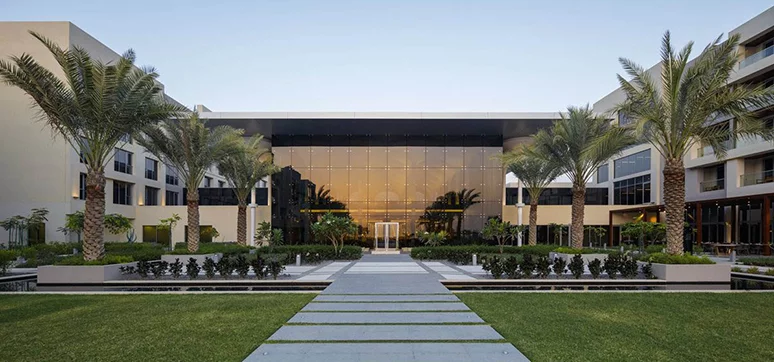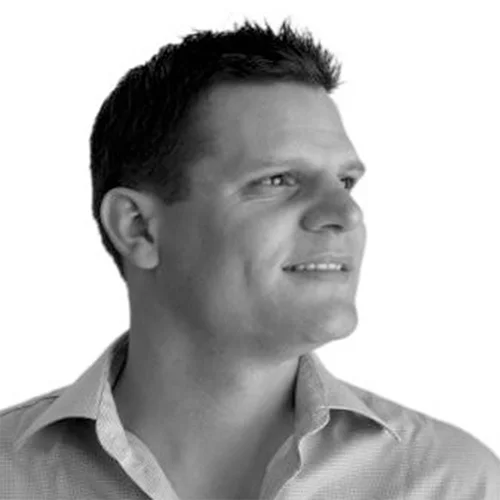Here are the excerpts from a recent interview with Jeroen Kortekaas the Head of Architecture at Bluehaus Group. Read now…
What inspired you to become an architect? How is your journey so far since you started your career?
In junior and secondary school I always liked to draw and physics and mathematics came quite easy to me. Architecture seemed to be a natural choice as it can be considered both art and craft, design, and engineering. Since my graduation from the Delft University of Technology in 2004, I have lived and worked in The Netherlands, Shanghai China, and Dubai in the UAE. I have worked on all scales in a variety of sectors, building up a portfolio covering residential, retail, large-scale mixed-use, as well as expertise in hospitality and high rise projects.
Currently, I hold a senior leadership position, Head of the Architecture business unit, within Bluehaus Group and I enjoy leading a multi-disciplinary team to create the best possible design and continue to use my creativity for viewing architecture from different angles. I like being on the forefront of developing innovative design strategies and strive to bring a conceptual approach to every project.

Could you please tell us about some of your major projects?
I have been lucky to have worked on numerous prestigious projects in various countries. Most notably the Raffles Hotel in Jeddah comprising of two individual towers, a 240-meter tall residential tower, and a 140-meter high hotel tower along the Corniche Road with a cantilevering ballroom.
Before this, I delivered the tower component of the Al Rajhi Headquarters in Riyadh, a 240-meter tall office tower with unique twisting cores placed on the outside of the tower (concept Design by SOM). Furthermore, I worked on the Mica Mall on Kish Island in Iran. This mall features 300,000 sq m of leasable area with a vast array of entertainment features such as an aquarium, indoor skydiving, and a cable car track. Also, I designed a 3,000-key hotel called the Conghua Resort Hotel in Conghua, China.
And last but not least I worked with a team on the highly acclaimed TWM Kempinski Hotel in Muscat, Oman. This hotel has the most amazing lobby to be found in the hospitality sector. Currently, I am working on three incubator offices in Sharjah for the Sharjah Government, several high-end residential villas, and a yacht club building in Dubai and Bluehaus is coping well with the challenges in the current climate.
Bluehaus Group has completed over 2 decades in the Middle East. How has its journey so far?
For the first 10 years since the inauguration, Bluehaus grew as an interior design consultant focused on Workplace strategy and design. The key milestones for that decade were simple, but memorable achievements such as headcount reaching 10, then 20; and moving to larger offices from Bank Street to Gold & Diamond Pack and then TECOM; coupled with more propelling achievements such as attaining our first multinational workplace client, our first multiple repeat customer and our first regional framework with a multi-national.
Our second decade of operation has delivered greater challenges, presented more risk, and seen tremendous reward as Bluehaus Group diversified its service offering to include architecture and MEP engineering design; diversified its vertical target markets to include hospitality, F&B, leisure & entertainment, public spaces; residential and retail design. Further, geographical market penetration and an investment in technology that has secured our continued focus on innovation. And here we are today!
What future opportunities and trends do you see in the architectural segment in the Middle East?
There will be a plethora of opportunities related to digital innovation such as 3D printing, digital fabrication, and the evolution of sophisticated software packages. 3D printing will start to scale up which will allow larger building components to be printed, or even complete structures. The digital fabrication of building elements, driven by new powerful software could lead to greater customisation at a cost-efficient price point. This in turn shall lead to more unique structures and building envelopes.
Furthermore, I think there will be a greater need for energy-efficient buildings. For example, and although not often used in the Middle East, cross-laminated timber seems to be a new structural solution to achieve more sustainable buildings as well as triple glazed window assemblies.

According to you, where is the architectural segment is heading in the Middle East?
There seems to be an ongoing trend currently to design and build contracts driven by great pressure on budgets and completion dates to mixed results. However, contractors are quickly adapting to this new way of procurement and at Bluehaus Group, we have noticed an increase in partnerships with contractors.
Locally, now Expo 2020 has been delayed by a year, the necessity to complete projects before the commencement of this event has been removed. This has caused clients and developers to re-assess their current portfolios and future developments and in several instances provided some welcomed breathing space. In some cases, projects have been brought forward, namely refurbishments, to leverage from the window provided by having Expo a year later. For the wider region, Saudi Arabia remains a key market with several large scale developments continue to gather pace and we are also excited by the energy being seen in Abu Dhabi.
Could you please tell us about the latest façade and cladding technologies and materials available in the UAE market and those you used in your project?
In general, the construction industry is very slow to adopt new technologies. However, recently in the United Arab Emirates, the biggest catalyst for a change of façades and façade technologies revolved around certain aspects of the fire life safety of buildings such as improvements to the fire-resistance rating of materials and assemblies, the introduction of fire cavity barriers and the omission of bituminous layers within the wall built-up.

Inevitably sustainability will play a far greater role in the future. There are already huge improvements observed for high-performance glass which reduces solar transmission whilst limiting the reflectance of the glass. New fabrication methods allow double-curved glass and double-curved façade panels. Most likely, it is not about introducing new materials to the market as such but stretching the properties of existing materials to allow for new uses within the building envelope. For example, I am experiencing an increase in insulation layer thicknesses to improve the thermal properties of the façade.
That being said, the appetite for using new materials and technologies by clients and developers within the current market conditions remains somewhat subdued. Building materials require a proven track record within the climatic conditions of this region before these materials will be truly taken into consideration.
Could you please brief on the technological benefits of the well-managed façades?

©Woods Bagot
Well-managed façades not only relate to the maintenance of the façades during the operation of a building but should take be taken into account at the commencement of the design. You should spend enough time during the design stage to fully develop the building envelope, improve constructability, and allow for testing and commissioning which should result in more efficient construction, and reduce building operating costs.
What are your views on the future façade and fenestration technologies as well as materials?
The key here is environmental concerns, using recycled and recyclable materials that should contribute to achieving higher sustainability targets. The ultimate goal is to realise self-sustainable buildings. In the future, I can see photovoltaic panels being completely incorporated within the façade and kinetics façades being the norm. These changing façades are responding to the change in climate conditions per day or per season, continuously adapting to provide the optimum performance of the façade.
What are the challenges the architectural segment is facing due to this Covid-19 situation?
Across the board, many sectors and disciplines, have been enormously impacted by Covid-19. Probably the biggest constraint on the business environment is the limitation of liquidity and cash flow, which is trickling down through the market. This brings a raft of other challenges to the table such as a few upcoming projects, hard-fought acquisitions with reduced margins, and delayed payments of invoices. However, having navigated two previous economic crises, Bluehaus Group has acted swiftly and with great care, at this moment we remain cautiously positive about the construction segment.
Has this pandemic affected your business? How are you dealing with this situation?

Of course, everybody has been working from home, most likely without facing too many problems. At Bluehaus Group, we like to learn from this unprecedented event, and going forward, we are implementing a ‘4+1 work week’. This means our team members have the choice of working Thursdays in the office, or from home – or in some cases, they may choose to work a Thursday in the office due to deliverables or another Thursday from home as they need to focus. It is proven by Gallup that this balanced and flexible way of working results in higher levels of staff engagement.
The Covid-19 situation has taught us that the world is changing, moving away from doing some things the old way, and forced us to adapt and bring new policies, procedures, and working methods into our office for this new era. We are excited about this.
As a well-known architect, what sustainability means to you and how do you ensure the sustainability aspects of your projects?
If the client or developer is the end-user of the building, the targets and ambitions related to sustainability are often quite easily met. There is a common interest between all parties and stakeholders. Once this scenario changes into a developer partnering up with an operator, resulting in a third party being the end-user, problems start to occur. There is suddenly a discrepancy between the party increasing their capital outlay for more efficient and often more costly solutions or equipment and the third party enjoying the savings made by this increase in costs for the said solution or equipment.
This can only be solved by the intervention of the Authorities by imposing stricter regulations towards sustainability. It is to note that great advancement has already been made such as the Estidama sustainability scheme and the net-metering of PV panels feeding unused electrical power back into the grid. Every architect should keep in mind that construction has an enormous impact on the environment, including the transport of construction materials, disruption to nature, and long-term energy consumption. In my opinion, the greatest opportunity for the construction industry is to re-use and renovate existing building stock as opposed to demolish and rebuild. If we collectively double the lifespan of buildings, we are twice as sustainable.
What is your advice for young and upcoming architects?
Persevere and try to gain some valuable experience early on and leverage from that to find that niche you can thrive in.














